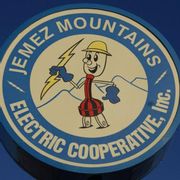Buying Electronic Gifts? Check This Out First!

Electronics are on the top of many wish lists this year. Safe Electricity and Jemez Mountains Electric shares tips on what to look for so that you can help ensure the electronic gifts you choose will be safe for your loved ones.
If you are purchasing electronics for a child, that means making sure that batteries, small pieces, and cords do not present safety risks. Remember not to purchase electronics that plug into the wall for children under the age of 10. Instead, opt for battery-powered products.
Buying refurbished electronics can cut back on the costs of a new product, however you should always buy used products from brands and manufacturers that you know and trust. If the packaging seems tampered with or is already opened, make sure that the product is undamaged and still under warranty. Before you purchase electronics that have already been opened, be sure that all safety components are still in place.
Products that are packaged in boxes that do not display a brand name and do not have a certification mark should be regarded with suspicion. Electronics without official markings could be counterfeit products, which are often cheaply made, presenting safety concerns. Stay away from electrical products that are sold at temporary venues where you will be unable to make returns.
Although these products are often much less expensive than their certified counterparts, they lack the reliability of electronics that have been tested and marked by an independent laboratory. If the price is well below market value, there is a likelihood that it is a counterfeit.
A certification mark indicates that a product is in compliance with safety standards and has been approved based on quality tests. While these marks, often found on the bottom of a product, cannot guarantee safety, they do indicate compliance with the preset standards. To help ensure safe use of the product, consumers must also properly maintain it and follow all manufacturers’ directions for use.
Safe Electricity recommends you keep the following tips in mind to help weed out fake safety labels:
- Take a close look at the label for signs of quality. If the label is blurred or torn, do not trust it.
- Check the packaging to ensure that there are no misspellings or incorrect information. This is a sure sign of a counterfeit product.
- Buy from brands and certification laboratories you can trust. If you come across a labeling standard you are unfamiliar with, check for the legitimacy online. Some common, legitimate marks are UL, CSA, and ETL.
For more information on electrical safety, visit SafeElectricity.org.
About the Business
Have a question? Ask the experts!
Send your question

